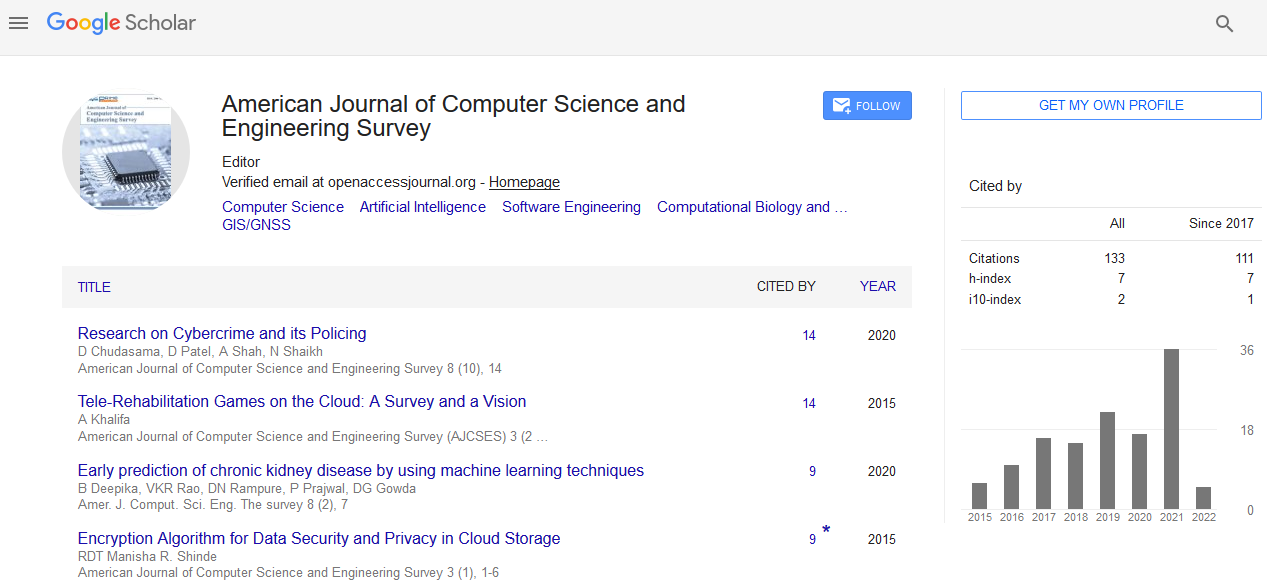Perspective - (2023) Volume 11, Issue 4
Astronomic Surveys : Understanding of Advanced Exploration Missions
Moran Sajju*
Department of Engineering, Standford University, USA
*Correspondence:
Moran Sajju,
Department of Engineering, Standford University,
USA,
Email:
Received: 29-Nov-2023, Manuscript No. ipacses-23-18459 ;
Editor assigned: 01-Dec-2023, Pre QC No. ipacses-23-18459 (PQ);
Reviewed: 15-Dec-2023, QC No. ipacses-23-18459 ;
Revised: 20-Dec-2023, Manuscript No. ipacses-23-18459 (R);
Published:
27-Dec-2023, DOI: 10.36846/2349-7238.23.11.37
Introduction
Astronomic surveys serve as a fundamental tool in astronomy,
enabling astronomers to accurately map celestial objects,
study the universe’s vastness, and comprehend cosmic
phenomena. These surveys involve the systematic observation
and measurement of celestial bodies, providing invaluable data
essential for scientific research, space exploration, and our
understanding of the cosmos. Astronomic surveys aim to map
the positions, motions, and characteristics of celestial objects,
including stars, galaxies, nebulae, and other astronomical
phenomena. These surveys create catalogs of objects, aiding
astronomers in their studies. By observing and cataloging
celestial objects over time, astronomic surveys contribute to
understanding the evolution of the universe, including the
formation of galaxies, star systems, and cosmic structures.
Description
Surveys of the sky provide valuable data for cosmological
research, helping scientists investigate fundamental questions
about the nature, composition, and evolution of the universe.
Astronomic surveys involve precise measurements of celestial
object positions, often using telescopes equipped with
advanced sensors and instruments to accurately determine
their coordinates in the sky. These surveys capture detailed
photometric data, including brightness, spectral characteristics,
and colors of celestial objects. This information aids in
classifying and understanding the properties of stars, galaxies,
and other cosmic entities. Astronomic surveys can vary in
their focus, encompassing wide-field surveys that map large
portions of the sky or targeted surveys that concentrate on
specific celestial regions or object types. Data obtained from
astronomic surveys significantly contributes to astronomical
knowledge, aiding in the discovery of new celestial objects,
understanding cosmic phenomena, and testing theories about
the universe’s origin and evolution. Surveys provide critical
information for space exploration missions, aiding in the
selection of targets for observation, exploration, and study by
space telescopes, probes, and other astronomical instruments.
Astronomic surveys contribute to public education and
engagement in astronomy, offering access to sky maps and
catalogs that allow amateur astronomers and enthusiasts to
explore and observe celestial objects. The vast amount of data
generated by astronomic surveys presents challenges in data
processing, storage, and analysis, necessitating sophisticated
computational methods and data management techniques.
Advancements in telescope technology, detectors, imaging
sensors, and data analysis software continue to enhance the
efficiency, sensitivity, and accuracy of astronomic surveys,
enabling deeper and more comprehensive observations of the
cosmos. Astronomic surveys play a crucial role in expanding
our understanding of the universe, providing comprehensive
catalogs and datasets that astronomers utilize to explore
celestial objects, study cosmic phenomena, and unravel the
mysteries of space. As technology advances and new survey
methods evolve, astronomic surveys will continue to deepen
our knowledge of the cosmos, fuel scientific discoveries, and
inspire curiosity about the marvels of the universe.
Conclusion
Astronomic surveys, conducted to systematically observe and
measure celestial objects and phenomena, offer numerous
benefits crucial to advancing our understanding of the
universe, enabling scientific discoveries, and supporting space
exploration. Surveys create extensive catalogs of stars, galaxies,
nebulae, and other celestial entities, providing valuable data for
astronomers to study the universe’s composition, distribution,
and evolution. Accurate measurements of celestial object
positions enable astronomers to precisely locate and track
objects in the sky, facilitating further observation and study.
Astronomic surveys contribute to unraveling cosmic mysteries,
aiding in understanding the formation and evolution of galaxies,
stars, black holes, and other celestial structures.
Citation: Sajju M (2023) Astronomic Surveys: Understanding of Advanced Exploration Missions. Am J Comp Science. 11:37.
Copyright: © 2023 Sajju M. This is an open-access article distributed under the terms of the Creative Commons Attribution License, which permits unrestricted use, distribution, and reproduction in any medium, provided the original author and source are credited.

